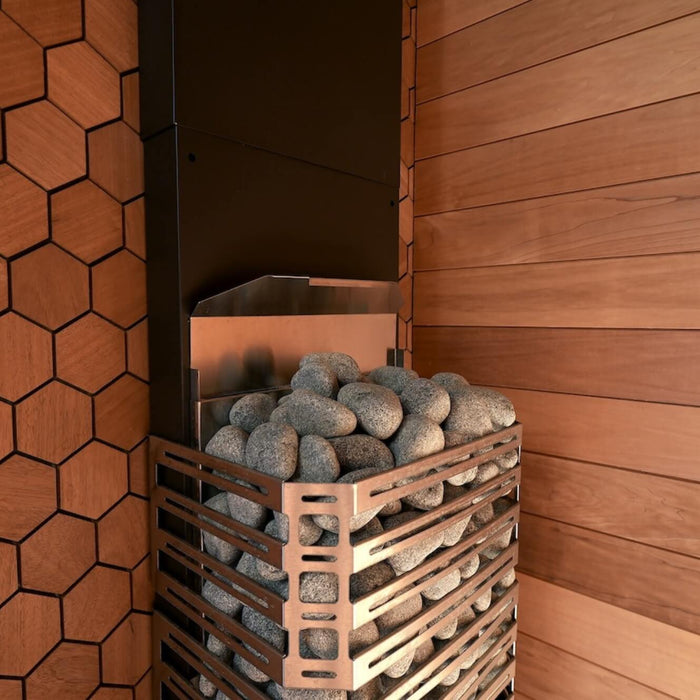
Call an Expert Now! +1 (833) 419-1774
Call an Expert Now!
+1 (833) 419-1774
Mo-Fr: 9AM - 5PM EST

The information provided by Topture is for general informational purposes only and is not intended as medical advice. Always consult with a licensed healthcare provider before making any changes to your health routines or pain management strategies. Individual results from using our products may vary. No specific outcomes are guaranteed, and none of the content should be interpreted as a promise of immediate or permanent results. Content on this site is subject to change without notice. Topture is not responsible for any discrepancies, outdated information, or formatting issues that may occur during display across different devices or browsers.
Let's talk about the one step that makes your dream sauna a reality: getting the power right. Understanding the electrical side might sound complicated, but it's actually pretty straightforward. This guide will give you the confidence to have a smart conversation with your electrician, understand your options, and plan your project perfectly. Let's demystify it together.
This guide is for educational and planning purposes only and is not a substitute for professional advice. The installation of any sauna, especially its electrical components, involves serious safety considerations.
The first step is to know what kind of power your dream sauna needs. The requirements vary quite a bit between a gentle infrared sauna and a powerful traditional model.
One of the biggest appeals of many smaller infrared saunas is their simplicity. Most 1- and 2-person models are designed to work with a standard 120V outlet—the same kind you use for your computer or TV. This makes installation a breeze. However, for the best performance, it's critical this outlet is on a dedicated circuit.

Larger infrared models (typically 3-person and up) often step up to a 240V circuit for more power and faster heat-up times. This requires a professional, hardwired installation.
Explore Our Easy-to-Install Infrared Saunas
A traditional Finnish sauna is all about high, enveloping heat. To achieve this, its heater is a powerful appliance that almost always requires a 240V dedicated, hardwired circuit. A standard 120V outlet simply can't provide enough power to heat those wonderful sauna stones. This requirement ensures your sauna heats up efficiently and maintains a consistent, robust temperature.
Shop Our Collection of Traditional Saunas
The requirements for an outdoor sauna are similar to an indoor traditional model (typically 240V), but with extra safety considerations for weather. Your electrician will use special, direct-burial-rated cables and ensure everything is protected by a GFCI (Ground Fault Circuit Interrupter) to prevent any risk of electric shock in a wet environment. We also recommend a GFCI breaker for any indoor sauna installed in a high-moisture area like a bathroom.
You'll see the term "dedicated circuit" a lot, and it's a simple but important concept. Think of it as a private, VIP highway for your sauna's power, running directly from your home's main breaker panel.
This ensures your powerful sauna heater gets all the energy it needs without ever causing a "traffic jam" on a circuit shared with other appliances. It's the key to preventing tripped breakers and ensuring your sauna performs at its best, every single time.
Before you fall in love with a specific heater, it's wise to make sure your home's electrical panel can support it. A quick consultation with an electrician can confirm your capacity.
Don't forget to factor professional installation into your budget. The cost to have a licensed electrician run a new 240V dedicated circuit typically ranges from a few hundred to over a thousand dollars. The final price depends on the distance from your breaker panel to the sauna and the complexity of the installation.
The power of the heater you need is determined by your sauna's size. You can easily find the right fit using our Sauna Heater Calculator. Once you know the required kilowatt (kW) rating, you can check the product specifications to see the necessary amperage and breaker size, and share that with your electrician.
For heaters from top brands like HUUM and Harvia that use external controls, the control panel must be installed in a dry location outside the sauna to protect the sensitive electronics from heat and moisture. Always refer to the manufacturer’s manual for specific placement guidelines.
Understanding your sauna's electrical needs is the key to a safe, smooth, and enjoyable installation. By knowing the difference between 120V and 240V systems and planning for a dedicated circuit, you're already halfway there. With the help of a licensed electrician, you can be confident that your personal wellness retreat will run safely and efficiently for many years of relaxation to come.
{"one"=>"Select 2 or 3 items to compare", "other"=>"{{ count }} of 3 items selected"}